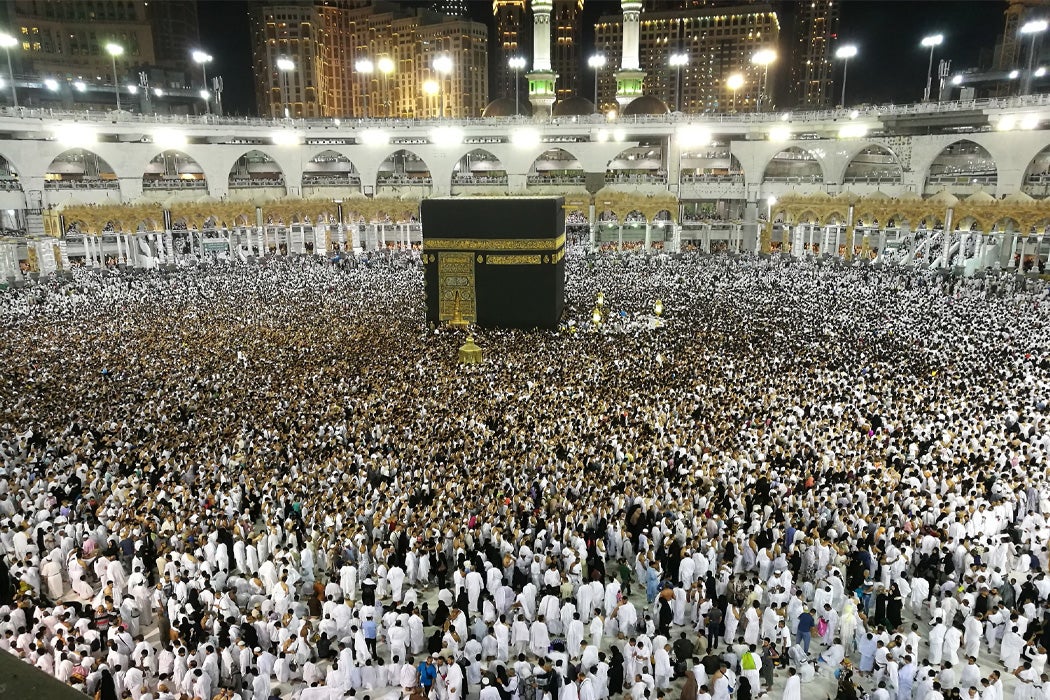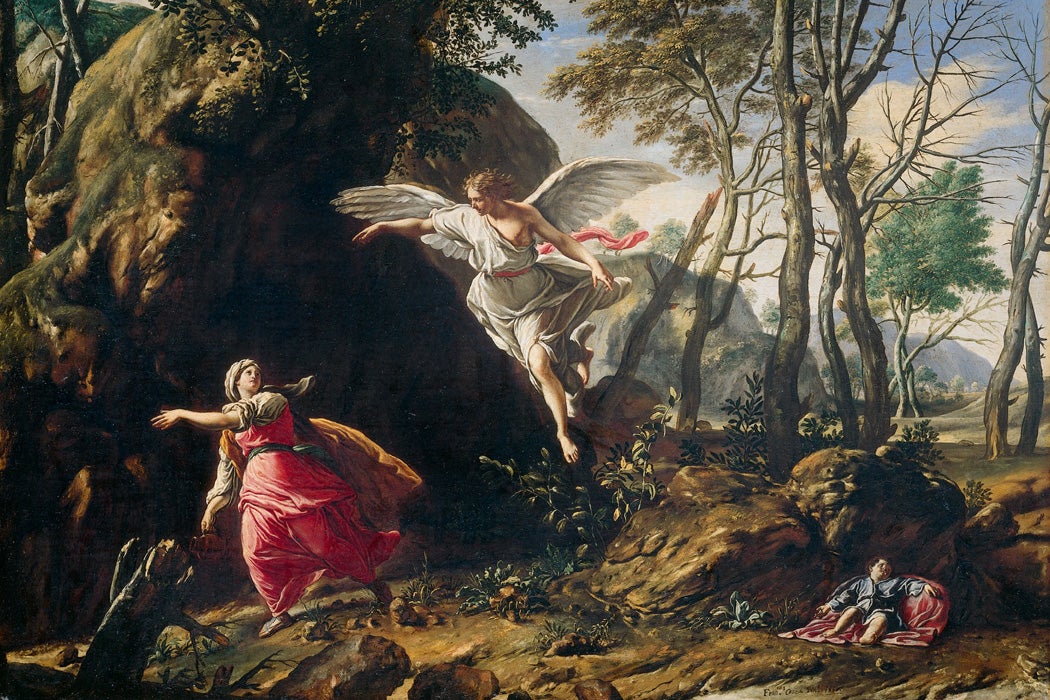This year, the Kingdom of Saudi Arabia issued 500 last-minute visas to South Africans ready to travel within two weeks. I was excited. I was going for Hajj. This was my time. I was going to be an honored and invited guest of God—me, and close to 3 million other Muslims.
The Hajj pilgrimage filled me with conflicting emotions, leaving me feeling both uniquely alone while at the same time connected to the ummah (the Muslim community at large). I felt important, yet insignificant, at once a guest and a slave. The constant focus on prayer and worship—and the disconnect from everyday life—was eerie yet peaceful. The pull between individuality and community was strong: I am responsible for my own faith, my own actions, yet there was a sense of responsibility to the group of Hajjis, all 3 million of us, all converging on a small area in Saudi Arabia for one purpose.
Weekly Newsletter
Performing the Hajj pilgrimage is compulsory for every Muslim who is physically able and can afford the trip. It consists of five days of ritual worship, practical formalities underscored by layers of meaning and symbolism. The symbolic themes of traveling toward the Beloved and of journeying between life and death are made real in the various and specific proceedings. Many of the rituals of Hajj, taught to Muslims by the Prophet Muhammad, are drawn from the life of the Prophet Abraham and his family (known to Muslims as the Prophet Ibrahim).
Abraham in the Hajj
Abraham features in the three main monotheistic religions: Judaism, Christianity, and Islam. A brief account of his life from the Islamic version of history helps to highlight how his story informs the Hajj pilgrimage. Abraham was a prophet who traveled the world. When he was advanced in age and despairing of having any heirs with his wife, Sarah, his wife gifted him a slave girl, Haajar, with whom he could continue his lineage. Haajar gave birth to Ismail, the forefather of the Islamic prophet Muhammad. When Ismail was still a baby, Abraham was ordered by God to leave mother and son in the Arabian Desert, in the area that is now known as Makkah (the center of the Islamic religion).
After some time, Abraham was ordered to sacrifice his son Ismail on God’s command, as a test of his faith. The dutiful prophet and his obedient son made their way to the appointed area in preparation for carrying out the command. They were taunted at three spots by the devil, who tried to dissuade them. Just as Abraham was about to sacrifice Ismail, God replaced his son’s body with that of a ram, allowing the ram to be sacrificed in his son’s stead. A few years later, father and son built the Kaaba, known as the house of God to Muslims, which is situated in the holiest mosque in Makkah.
The Hajj pilgrimage contains symbols of Abraham’s actions, including throwing stones at the spots where the devil taunted Abraham, the sacrifice of a sheep, and worship around the Kaaba. Enduring the sometimes-difficult journey to Saudi Arabia, and then the journey between various points around Makkah during the five days of Hajj, is also reminiscent of Abraham’s wandering nature. While travel is encouraged in Islam—if only to make you grateful for your home comforts and to improve health—it is also said to be a lesser version of hell. The Hajj journey is not meant to be easy; it is not meant to be a holiday. Pilgrims are warned that they will be tested.
While I definitely did not find the journey easy, looking around at the countless old and infirm people making the journey, I found much to be grateful for. There was nothing for a young healthy person to complain about. I told myself: if octogenarians in wheelchairs could brave the heat (over 100 degrees Fahrenheit) while still managing the physical rituals of Hajj, I could manage some dehydration and heat stroke as well.
The Life and Times of Haajar
The story of Abraham is not the only source of the Hajj rituals. The connected story of Haajar, Ismail’s mother, is equally important and perhaps less well-known.
As mentioned above, Abraham was commanded by God to leave Haajar and their baby boy alone in a barren desert, with only some dates, a little water, and her faith. Haajar was confused, but accepted her fate when she realised that Abraham was carrying out the will of God. However, survival was difficult in the heat of Arabia, with no oasis in sight. After her food and drink had run out, scripture has it that Haajar started running desperately between two hillocks (close to where the Kaaba is situated, although it was not built at the time) to see if she could spot anyone—or any water.
She ran seven times between the hills of Safa and Marwa (around 2 miles in total), urgently hoping and searching for help. After Haajar had completed her seventh frantic dash from hill to hill, a well sprung up from beneath the feet of baby Ismail. Seeing the gushing water, she rushed back to her baby and started cupping the water, saying “Zam Zam” (Stop Stop) as she did.

With a source of water now established, passers-by began to settle around the area, and a community began to form. The well of Zamzam still exists, and it quenches the thirst of millions of pilgrims to this day. Zamzam water is special to all Muslims, and pilgrims fill their bottles to carry some of this water home to serve to guests who arrive to greet the Hajjis (the title “Hajji” is ascribed to a person who has completed the Hajj pilgrimage).
This strong woman, a slave and a woman of color, practically a single mother, had the strength to survive. Her memory is kept alive every day because her running between the hills of Safa and Marwa is a crucial part of the Hajj rites. Pilgrims re-enact Haajar’s search for help by walking between the two hills seven times while absorbed in prayer. Enter the holy mosque at any time of the year and you will see thousands of pilgrims walking in Haajar’s footsteps, because the walk between Safa and Marwa is also an obligatory part of the other Muslim pilgrimage (known as Umrah, which can be performed at any time of the year).
Reclaiming Haajar
The cool air-conditioning and marble floors that now adorn the sacred precincts are a far cry from the hot desert of yesteryear, when the pilgrimage was first performed, back in the time of the Prophet Muhammad, over 1,400 years ago. But even though Zam Zam water is now cooled with ice and flows out of taps, and the hills of Safa and Marwa are now enclosed within the holy mosque’s walls, the symbolism of the ritual acts remains intact.
Haajar’s story is symbolic for single mothers and women of color, as well as all Muslim women looking to find strength and representation within their faith. It offers a way toward a feminist reading of Islam that does not require an abandoning of religious identity. Scholars, like the philosopher Amina Wadud, have started to reclaim Haajar’s story in their re-readings of religious history and scripture. Arguing that Islam has been read, written, and interpreted mainly by males, contributing to its patriarchal culture and stifling the principle of gender justice, feminist Muslim scholars have started to highlight the heroines in Islam.
The scholar Simonetta Calderini, in analysing Wadud, says that her work and activism is still contextualized through Western feminism. Nevertheless, she also notes:
…that today Muslim women’s movements, even though historically heavily influenced by Western theories on women’s rights and social justice, have developed into acknowledging the need for an indigenous Muslim theory and practice of reconstruction in human rights discourse.
They have also initiated a process of re-reading religious texts from a gendered perspective. The author Mohja Kahf has written a book titled Hagar Poems (Hagar being an alternate spelling of Haajar), using the story of Haajar as a starting point to explore women in Islam, combining the ancient and contemporary to bridge the gap between Haajar then and Haajar now. The book’s foreword, by Wadud, says of Kahf’s work:
The women in these poems can birth a nation and then come back to destroy it. With that destruction we are all invited to destroy our tendency to rely upon a single narrative in what truly matters in life stories. Not only does she take on the patriarchy in all its guises, she avoids the bland attempts to then make women out to be perfect.
My personal experience with the Hajj this year brought to life the iconic figure of Haajar, her tenacity and stoicism, her vital role in Islamic history, and the importance of women in Islam. While it seems that the stories heard and recounted around Hajj time often focused on the male Prophets, the story of Haajar was alive as well, and provided a comforting counterpoint to the idea that men are the inevitable leaders in Islam. The notion of a “single narrative” of Islam, women, and women in Islam, was challenged by my experience of the pilgrimage – after witnessing the countless women on their own personal spiritual and religious journeys, I was reminded that Muslim women come in many different forms, each with individual contexts and cultures shaping their life narratives. We cannot be reduced to a single notion or image. Added to that, the story of Haajar, a constant undercurrent in ladies gatherings, re-enforced the idea that women can and do take care of themselves, and that even in Islam, women place reliance on God and not on men. When it comes to the rite of walking between Safa and Marwa, all Muslims, men and women alike, have to follow in the footsteps of a brown slave woman. Only after retracing her steps does one complete the pilgrimage.

The impact of Haajar’s story may be even broader, according to one team of researchers. David Clingingsmith, Asim Ijaz Khwaja, and Michael Kremer studied the impact of the Hajj on social tolerance and found, when comparing Pakistanis who had completed the pilgrimage with those who had not, that the experience of the pilgrimage “increases belief in equality and harmony among ethnic groups and Islamic sects and leads to more favorable attitudes toward women, including greater acceptance of female education and employment.”
Personally, before experiencing the pilgrimage, I clung to academic notions of Islamic feminism. Academic inquiry into areas such as the overlap between Islam and feminism have an important role to play in overturning the patriarchal culture that persists in many Muslim societies. It works as a means to prove that patriarchy is cultural and not religious, and that patriarchy cannot be upheld on the basis of religious doctrine.
However, during the pilgrimage, the historical symbolism of Haajar’s story overtook academic theory, and I felt as if I were living the principles of Islamic gender justice without the need for arguments or proof. Perhaps spiritual experiences have a transcendental power, an ability to skip a few steps that logic usually must pass through. Additionally, during the second night of Hajj, in which the millions of pilgrims sleep under the stars with nothing but thin reed mats, unadorned clothing, and whatever they can carry in their backpacks, the nature of equality and submission that Islam and the Hajj try to inculcate between all Muslims, regardless of gender and status, is brought home.
While experiencing the rituals of Hajj, the crowds and the chaos, the calm and the heat, the traffic and the peaceful moments of contemplation, all of life seems to be squashed into small spaces in small pockets of time. Walking between Haajar’s hills of Safa and Marwa, I was reminded that the Islamic feminist scholars of today still walk in the brave footsteps of one of the noble mothers of Islam: Haajar.







